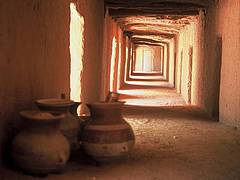The World Heritage
Committee on Thursday accepted the request of the government of Mali to place
Timbuktu and the Tomb of Askia on UNESCO’s List of World Heritage in Danger.
The decision aims to raise cooperation and support for the sites threatened by
the armed conflict in the region.
The Committee, meeting in St Petersburg
until 6 July, also asked Mali’s neighbours to do all in their power to prevent
the trafficking in cultural objects from these sites. There is concern that
such objects, notably important ancient manuscripts, be looted and smuggled
abroad by unscrupulous dealers.
The 21 members of the World Heritage
Committee urged the African Union and the international community to do
everything possible to help protect Timbuktu, inscribed on UNESCO’s World
Heritage in 1988, and the Tomb of Askia, inscribed in 2004.
The Director-General of UNESCO, Irina
Bokova, has repeatedly urged international cooperation to protect the two sites
which bear witness to the golden age of Timbuktu in the 16th century and to a
history that stretches even further back to the 5th century of the Hegira. She
has also voiced grave concern for the 17th century pyramidal Tomb of Askia.
UNESCO's Director-General sent a mission to the country in May to envisage ways to work with the authorities on the preservation of the two sites.
The List of World Heritage in Danger is designed to inform the international community of threats to the outstanding universal values for which a property has been inscribed on the World Heritage List, and to encourage corrective action.

Nomination
File- Tomb of Askia, Mali
